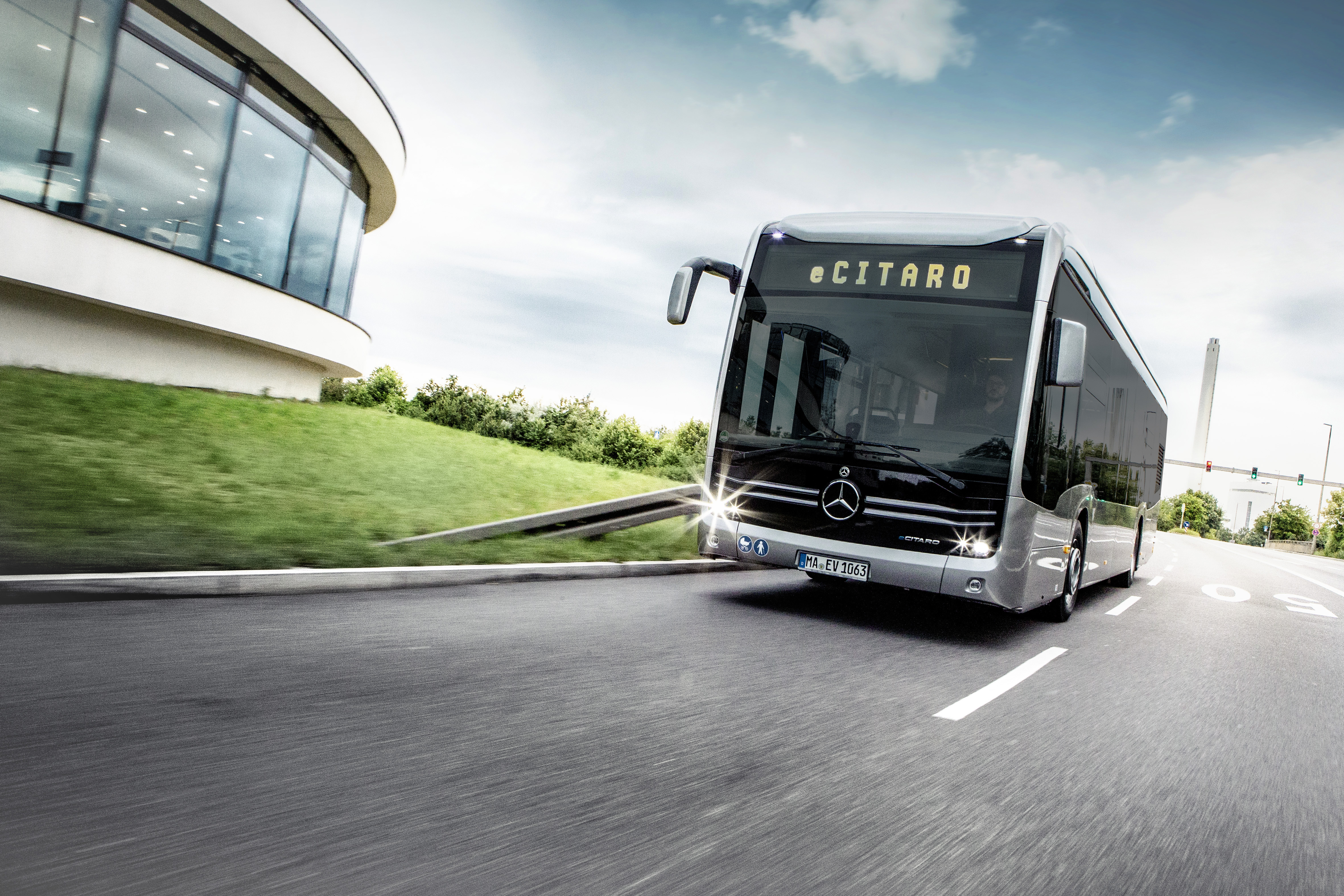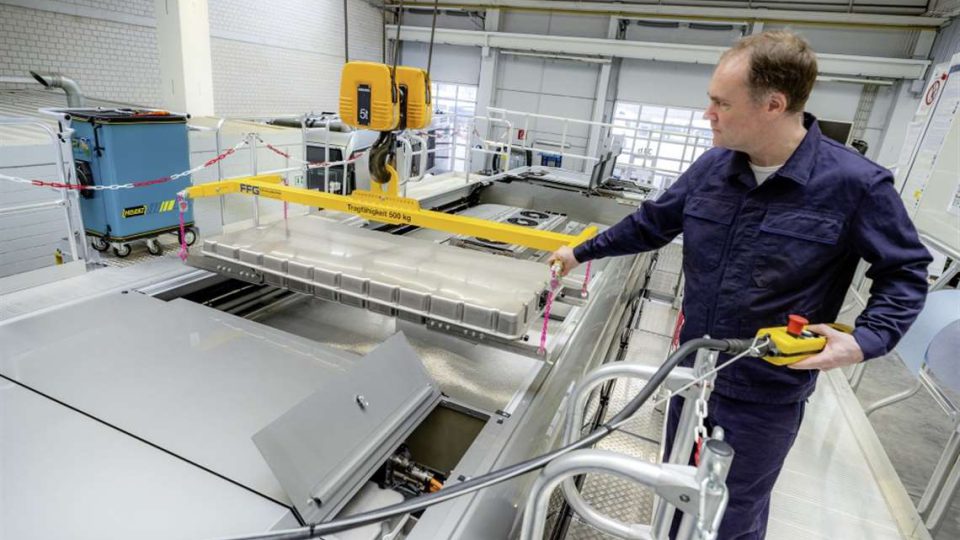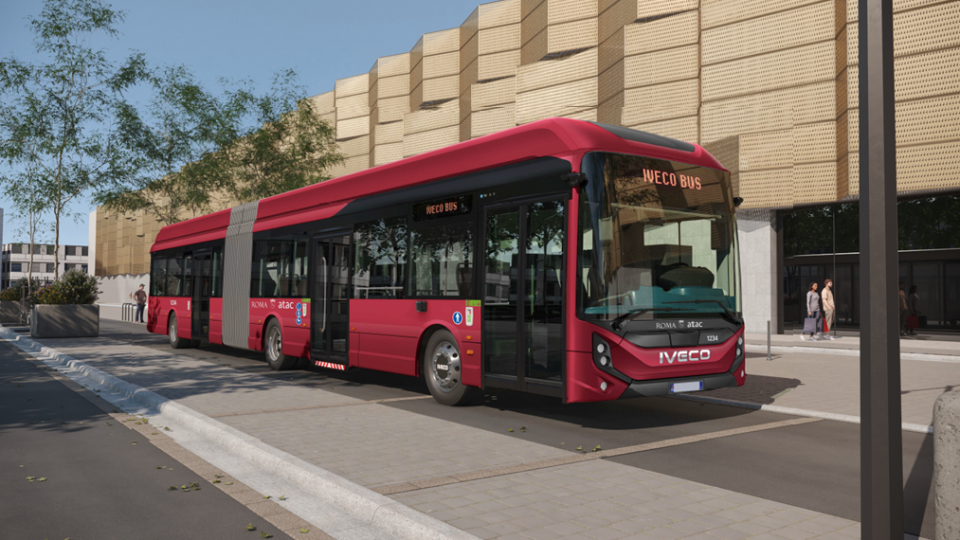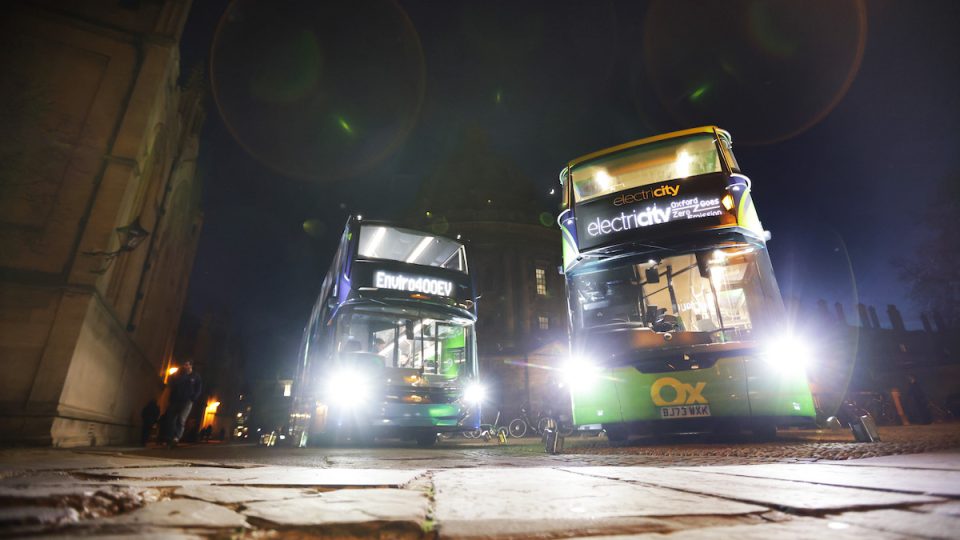Electric Citaro, the world premiere of Mercedes first battery electric bus
Mercedes Citaro electric, the time has come. Today Mercedes has showcased its first battery electric city bus, a concept for the first time presented in March. The world premiere of the electric Citaro will be held at IAA in Hannover and the serial production will begin by the end of the year. The electric bus is […]

Mercedes Citaro electric, the time has come. Today Mercedes has showcased its first battery electric city bus, a concept for the first time presented in March. The world premiere of the electric Citaro will be held at IAA in Hannover and the serial production will begin by the end of the year. The electric bus is moved by Zf electric portal axle Ave130. The electric Citaro features a innovative thermal management. Two orders, to date, has been placed: one from Bvg Berlin for 15 units, the other from Hamburger Hochbahn for 20 vehicles. The vehicle is also in the shortlist for the final stage of Sustainable Bus Award 2019.

Electric Citaro with Zf electric axle
With a few years of delay compared to the forerunner of transition to electric buses (today the main manufacturer of the electric buses running or ordered in Europe are ADL/BYD, Solaris and VDL), Mercedes is now taking the step from low-emission bus (a definition that can match the Citaro mild hybrid) to locally emission-free bus. A clever definition that stresses a crucial point: the electric bus produces no pollution from the tailpipe, but its “cleanliness” depends on how the electricity is produced.
Coming back to the electric Citaro, as already said, the drive system is provided by the electric portal axle Ave130 manufactured by Zf, with electric motors at the wheel hubs. The peak output of the motors is 2 x 125 kW, while torque is 2 x 485 Nm, fully available right from the start.
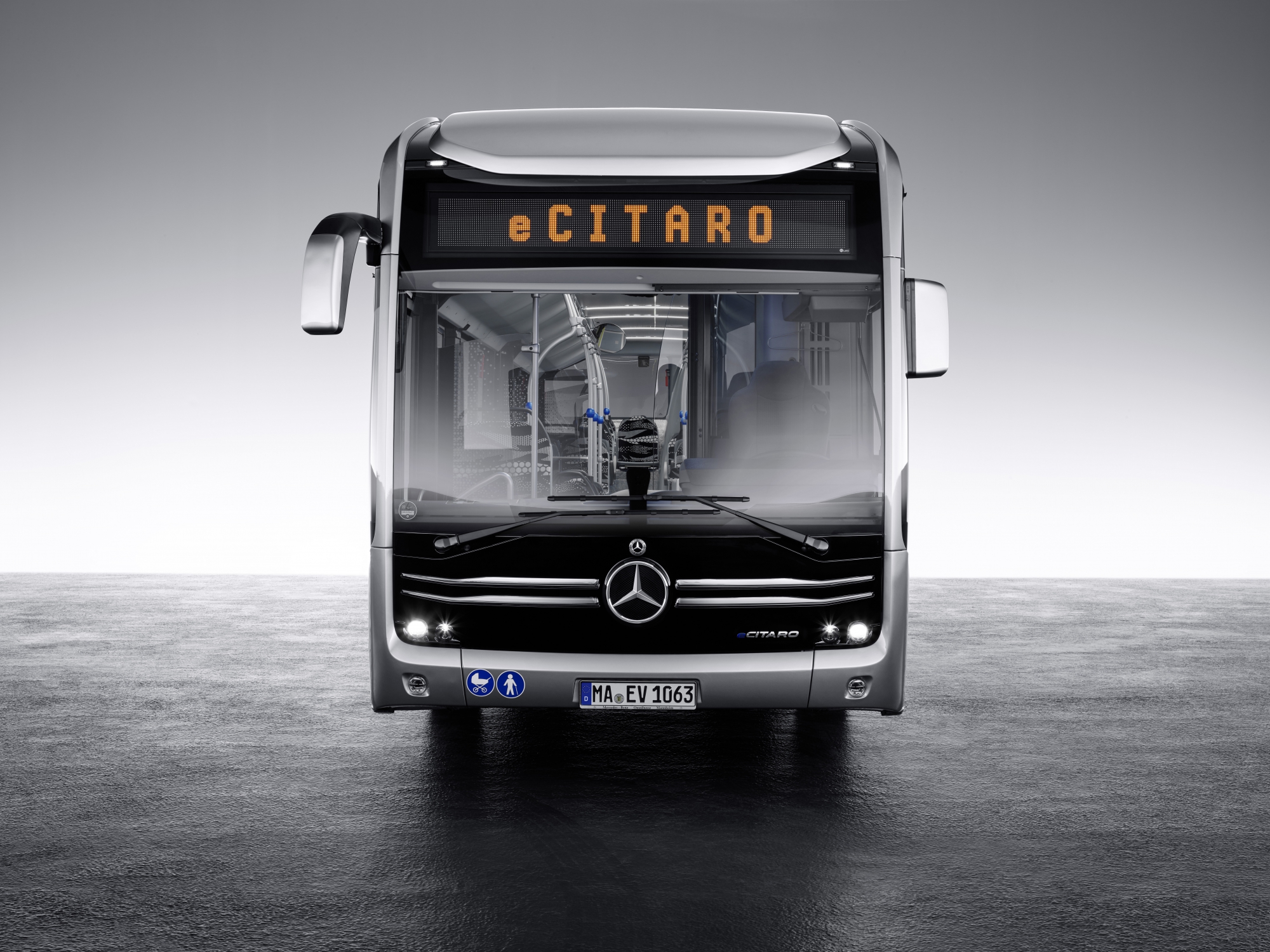
Up to 243 kWh for the electric Citaro’s batteries
The batteries of the electric Citaro are Lithium-ion type, with a total capacity of up to about 243 kWh. These are split between up to a maximum of ten modules. As well as two battery modules on the roof, the standard equipment includes four modules in the rear of the bus. Depending upon customer requirements, a further two or four battery modules may be mounted on the roof. The amount of energy stored by the electric Citaro is absolutely average. The main exception to the standard is MAN, who has recently unveils the features of the MAN Lion’s City E, that will be presented at IAA as well. The vehicle will be equipped with 460 kWh batteries (12 meters) or 640 (18 meters).
With the maximum complement of ten battery modules, the all-electric Citaro weighs around 13.44 tonnes. In conjunction with a gross vehicle weight rating of 19.5 tonnes, this corresponds to a payload of more than six tonnes or around 88 passengers (15 less than the conventional diesel solobus).

Electric Citaro, ready for future developments
The electric Citaro engineering has been future-proofed, states the communication from Daimler. Since the development of battery technology is progressing at a rapid pace, provision has already been made for the transition to the next generation. The charging technology used is similarly flexible. For the start of series production, charging via a Combo 2 connector is envisaged. If, in order to extend the range of the vehicle, there is a requirement for opportunity charging, there will in future also be an option to charge the Citaro via a pantograph. The Citaro thus allows for all variants currently in use.
The heating system of electric Citaro
Compared with the current Citaro with combustion engine, the energy requirement for heating, ventilation and climate control has fallen by about 40 percent. The passenger compartment of the Citaro is heated in an energy-efficient manner by a heat pump. The heating and climate control systems are configured in accordance with the requirements of the Association of German Transport Companies (Verband Deutscher Verkehrsbetriebe: VDV). If the temperature outside is extreme, comfort levels at either end of the scale are reduced somewhat in favour of energy consumption and thus range.
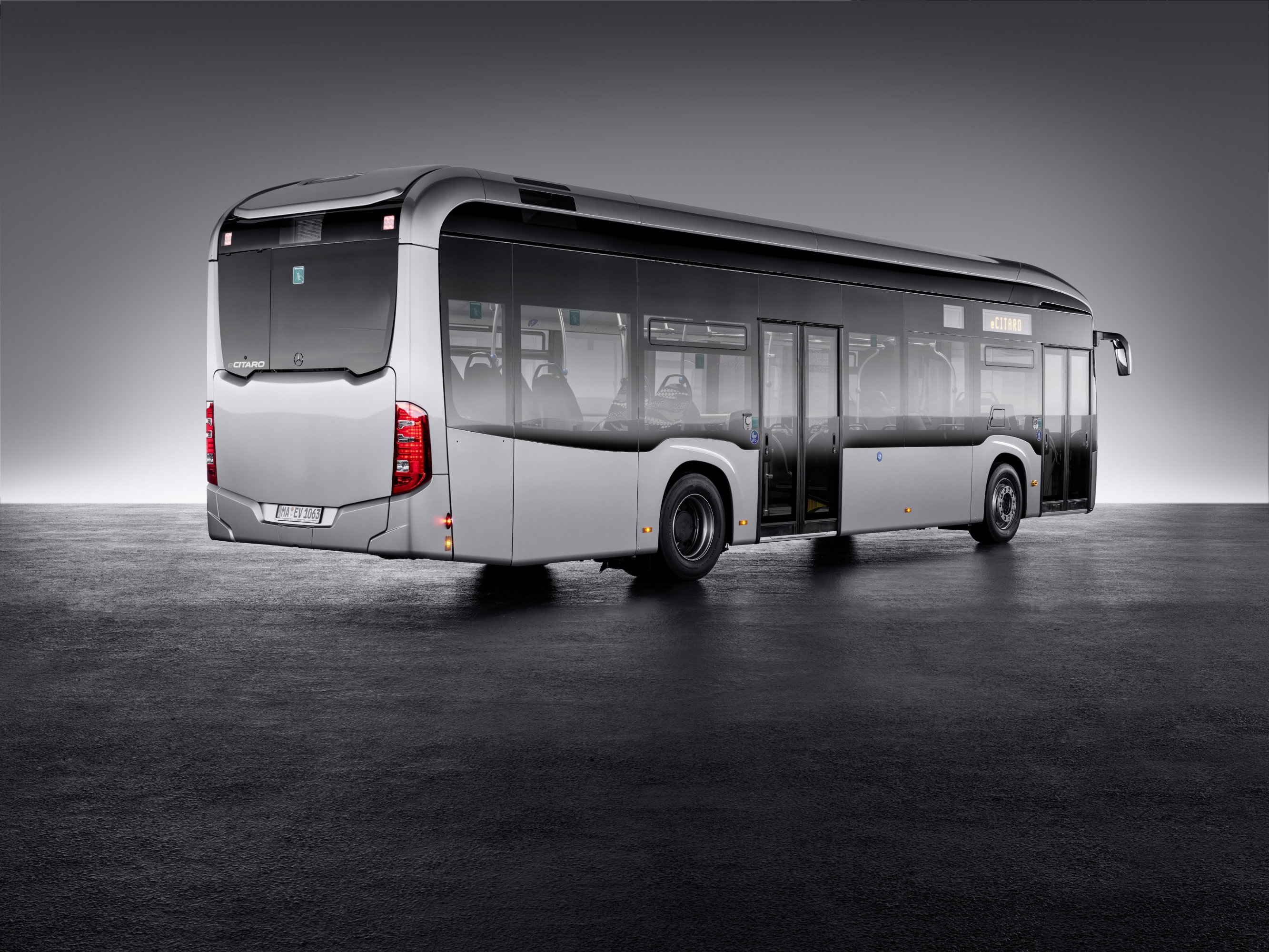
150 km in Sort2 with 243 kWh of batteries in summer
When it comes to giving figures for the vehicle’s range, Mercedes-Benz prefers to consider a “worst-case scenario”, taking its direction from the ‘Standardised On-Road Test cycle’, SORT2. According to this, the Citaro with a full complement of batteries can achieve an operating range of around 150 kilometres in the summer. In other words, is the thinking of Mercedes, it is already possible to serve some sub-networks within the daily coverage of a city bus without opportunity charging.
Rethinking urban mobility: the eMobility system
The all-electric Citaro forms part of Daimler Buses’ integrated eMobility system. This encompasses the expert advice service eConsulting, even before any purchase is made. Experts analyse the various routes, evaluating the runs and establishing links between them. A simulation programme then calculates the energy needs. This work produces detailed recommendations and calculations relating to charging infrastructure, energy consumption, load capability of the power supply at the depot and charging management.
